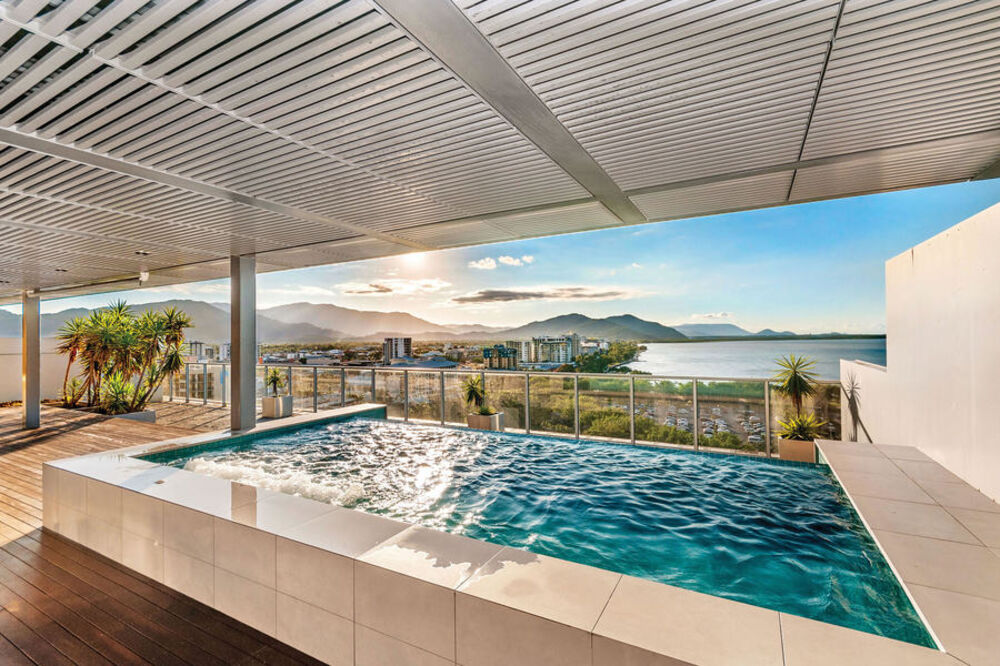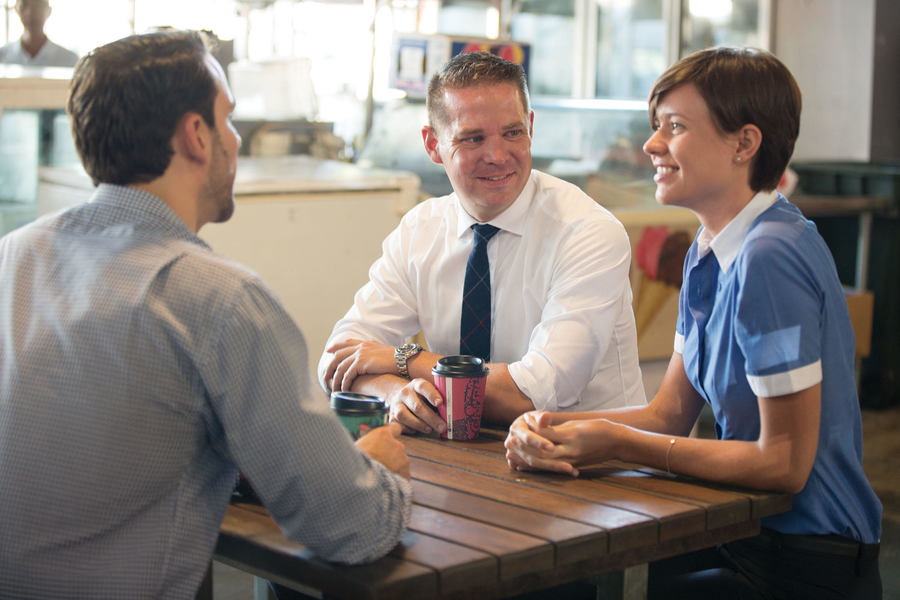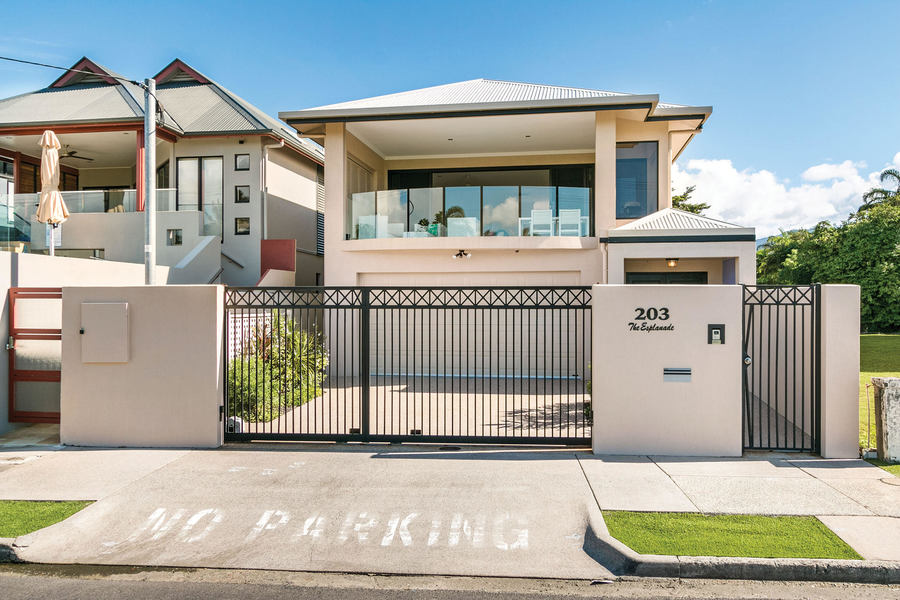How Cairns real estate is being turned upside down

If author Lewis Carroll were a modern-day property analyst, he would surely borrow a phrase from his most famous book Alice In Wonderland to describe the current state of Cairns real estate: “curiouser and curiouser”.
The market is confounding the public and the data is at odds with the anecdotal evidence.
Tourism, investment and economic confidence are all on the rise but median house prices remain decidedly flat, and that’s despite our enviable level of housing affordability relative to capital city markets.
To confuse matters even further, a disconnect is developing between the median house price and the top end of the market, which is flying high.
According to research by Belle Property Cairns, there were 51 sales of million dollar-plus residential homes and apartment in 2016, a remarkable 70 per cent increase over the previous year.
Compare that to the nominal rise of 0.9 per cent in the median house price over a similar period.
So what’s going on?
Our local property market is being turned upside down – in a good way. Gone are the rollercoaster days of the past 20 years. Today, we're seeing a much steadier, more sustainable growth pattern.
In an attempt to cut a clear path through various reports and statistics, Tropic looks back at where the local real estate market has come from before we look ahead, to get a handle on where it’s all going over the next few years.

A LOOK BACK AT THE BOOM
Those who were here at the time call them the “golden years”, a champagne period of extraordinary growth that fuelled prosperity in the Tropical North for a decade leading up to the Global Financial Crisis of 2007-08.
Buoyed by out-of-town investors grabbing residential property bargains, price rises were running at between 10 and 30 per cent in different areas of Cairns from 2000 to 2004.
In the March quarter of 2004, the median house price in Cairns stood at around $225,000. By December of that year, it was $30,000 higher at $255,000. That’s a larger increase in 12 months than our market has experienced in the past eight years combined.
The market was so lucrative back then that some local real estate agents were able to retire years before the rest of us are meant to.
Agents of a certain vintage remember the days of selling a $60,000 Queenslander near the Esplanade or Cairns North one year and $400,000 just five or so years later.
And while the boom led to an over-supply of new housing from 2005 to 2007, prices were still going strong.
In the year to September 2007 – just as the GFC started to bite - research by Herron Todd White found the median house price in Cairns rose 17 per cent to $375,000.
Ever since, as local construction giants collapsed, tourism nose-dived and the world entered the dark days of the economic crisis, our city’s real estate market has been languishing on a price plateau.
With a negligible growth rate of 0.9 per cent in 2016 – a staggering turnaround from the halcyon days of double digit growth – you can understand why some are pessimistic about the current upswing in confidence about our city’s economic future.

GRADUAL GROWTH
Real estate agents are eternal optimists. They have to be. A brave face and a buoyant outlook are crucial to securing the next sale, regardless of market peaks or troughs.
But some, like Nickoli Obersky from One Stop Property and Nicholas Slatyer from Belle Property are also straight-talking realists, and right now they’re quietly confident.
Mr Obersky is from a Cairns real estate family, with his parents Gerard and Cathy working in the industry in a range of roles for the past four decades.
He has sold 600 properties over the past eight years. As the data in the post-GFC era mentioned above prove, that’s a tough time to make your mark on the Cairns property market.
Just about every sale is hard-won and you’ve got to know every facet of the local market to impress an increasingly informed cohort of buyers.
Casting his eyes over the trends and data from both near and afar, Mr Obersky is confident there are only two markets with promise in Queensland: the south-east corner and Cairns.
“Both catchments share the fundamentals that drive opportunity and support positive growth,” he told Tropic.
“When it comes to population growth, Cairns bucks the state trend for regional areas and has maintained steady but below 20-year trend for population growth.
“Unemployment is now tracking around the state average and there is no doubt 2016 saw significant improvement in the workforce participation.
“On top of those two factors, Cairns is more affordable than the south-east corner and we have always been a much more desirable lifestyle offering for potential new residents because we offer more than most other regions.
“Supply and demand drives housing prices, and with record low new stocks of built homes and reduced new land sales there’s a below-need supply.
“There is pent-up demand in our market especially with very well educated buyers. Desired properties will be the first to benefit with this inevitable price rise.”
Mr Obersky says the first quarter of 2017 has been more positive than the same period in recent years at the One Stop Property office.
“We’re definitely experiencing more engaged enquiries and positive new business activity.
“When comparing the current workbook of contracts in progress we have far more than that of the last few years so clearly the business environment is stronger and consistently building.”

TOP END SALES
You might call Nicholas Slatyer from Belle Property Cairns the ‘mythbuster’.
In the first two months of 2017, the local Belle office already secured sales of $1.21 million, $1.75 million and $2.35 million in our city.
Mr Slatyer’s experience of this market segment means he’s privy to some fascinating insights that unravel local misconceptions.
Firstly, he is often surprised by the number of sellers who believe there aren’t many buyers for properties over the $1 million mark.
“We’ve looked at the statistics and the sales data, and they really surprise people,” he told Tropic.
“For instance, there have been 51 sales of residential houses and apartments over $1 million in 2016, which suggests the opposite of the perception many sellers have.
“Those 51 sales last year represent a 70+ per cent increase over 2014/2015 which reflects the growing confidence in the city in general.”
Mr Slatyer also encounters regular feedback about the apparent lack of local buyers in that top price bracket. Again, the facts tell a different story.
“In general, homes in the $1 million+ range offer great value in Cairns. That is, many of the sales are at less than replacement value,” he said.
“The majority of our buyers in this price range are local, which also dispels another myth that suggests we need an interstate buyer or foreigner to invest.
“Over 60 per cent of our buyers in this price range are local and they all owner-occupy."

WHAT’S NEXT FOR HOUSE PRICES
The frontline views of Mr Obersky and Mr Slatyer are backed by experts from outside the region.
They first started recognising the growth potential in our patch back in 2015, when tourism really started taking off.
And while no-one is predicting the kind of rapid growth we saw before the GFC, there’s a sense of anticipation and positivity about the Cairns real estate market going forward.
In his 2015 list of “boom towns” for property investment, high-profile property commentator Terry Ryder ranked Cairns at number three in the nation.
“Cairns is making an economic comeback, with spin-offs for its property market,’’ Mr Ryder said at the time.
That sentiment of a “boom” is backed by one of the most respected economists and forecasters in Australia – and frequent reference point for our news reports on TropicNow.com.au – Frank Gelber.
In his role as chief economist at BIS Shrapnel, it’s his job to pick winners and advise clients around the world.
And he’s repeatedly tipped Cairns to a big winner over the next five years.
“Places like Cairns and the Gold Coast will be the big growth regions of the future,” he said last year.
“Retail sales will be picking up, housing demand will be picking up. We will see a classic upswing, the sort of thing that we saw in the mining regions, but not as strong, not as quick and not as fickle.
“What we've seen now are only the beginnings of a pick-up. We've got a long catch-up to go to get back to where we would have been if not for a high dollar.
“If you look at tourist towns they were booming before the dollar went up, then fell into a long period of dismal, supressed activity.
“Now the tourists are coming back, not just from overseas but more particularly domestic tourists as well. That is boosting activity across the board and it will end up boosting population growth.
“Because we think the dollar will stay low, this is just the beginning of the process.”
"We ain't seen nothing yet. Five years from now these sectors will be booming, and I don't use that term lightly."
Local agents don’t use the “boom” term, for good reason.
While there are issues to address – such as the system of valuations – the fundamentals in Cairns are sound, from positive population growth, housing affordability and job creation in tourism and construction.
With those factors being under-pinned by a low Australian dollar, house prices and the broader economy will rise.
But rather than the “golden years” of rapid, unsustainable growth our city experienced before the GFC, there’s a growing realisation that a gradual, consistent rate of growth is more desirable.
If the combined views of local real estate agents like Mr Obersky and Mr Slatyer meet and merge with the opinions of national experts, that’s precisely the type of steady trajectory Cairns is already on.


